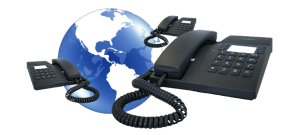Essential Tremor Teleconference
Posted March 4th, 2016 by TAN
On Thursday, March 3, 2016 the International Essential Tremor Foundation (IETF) held their first teleconference call. The topic was Essential Tremor Diagnosis & Treatment Options. Pre-registration was required and available for several weeks prior to the event. Since this was a teleconference it was only on the phone, no video or slides. Participants called an 800 number then keyed in the code for the particular conference. When first calling in, participants identify themselves and then their lines are muted until the Question and Answer portion.
The topic was Essential Tremor Diagnosis & Treatment Options. Pre-registration was required and available for several weeks prior to the event. Since this was a teleconference it was only on the phone, no video or slides. Participants called an 800 number then keyed in the code for the particular conference. When first calling in, participants identify themselves and then their lines are muted until the Question and Answer portion.
Patrick McCartney, IETF Executive Director, moderated the teleconference. He introduced the speakers and facilitated the question and answer section. Due to technical issues, Dr. Kelvin L. Chou, a neurologist from the University of Michigan Medical School, spoke first. Dr. Chous topic was the treatment of essential tremor. He began by stating that not everyone with essential tremor needs intervention. It depends on the severity of the symptoms and the problems it causes in the individuals life. Dr. Chou stated that medications are more effective on hand tremor compared to voice and head tremor. He said medication should always be started at the lowest dosage and increased until the tremors are improved or the side effects of the medication become problematic.
Dr. Chou covered the main medical treatments:
Inderal (a beta blocker) is the most effective for essential tremor. It is also the only medication FDA approved for essential tremor. Fifty to seventy percent of patients see a reduction in tremor. The possible side effects include low blood pressure, fatigue and depression. The dosage can range from sixty to two hundred and forty milligrams.
Mysoline was originally made for epilepsy but found to help essential tremor. The possible side effects are sleepiness, cognitive impairment and gait imbalance. The dosage ranges from twenty-five to three hundred milligrams.
Topamax is another epilepsy drug. Possible side effects can include fogginess, weight loss, incoordination, glaucoma and kidney stones. Dosages range from twenty-five to three hundred milligrams.
Neurontin is an anti-seizure medication. The dosage ranges from one hundred to two thousand seven hundred milligrams.
Valium and its related family of benzodiazepines drugs helps more with the anxiety that exacerbates essential tremor.
Botox is effective for head and voice tremor but not hand tremor.
Dr. Chou mentioned that if a patient tries three or four different medications to no effect, there is a high chance that the patient will not respond to medication and may want to consider surgical options.
As far as surgical options, Dr. Chou mentioned Thalamotomy and Gamma Knife. Both are non-invasive but burn an area of the brain in the thalamus. The side effects are permanent and irreversible for both these methods. Two other methods mentioned are Focused Ultrasound and Deep Brain Stimulation. More information on the surgical topics can be found at Tremor Action Network.
The second speaker was Dr. Arif Dalvi, a Movement Disorders Neurologist and Director of the Palm Beach Neuroscience Institute. Dr. Dalvis topic was the diagnosis of essential tremor. He began by explaining that in medical terms, essential means a symptom in isolation, not from a secondary cause. He described a typical clinical examination. The neurologist would have the patient do several different movements and tasks to help differentiate between essential tremor and any other diseases like Parkinsons or Multiple Sclerosis. In addition to the physical exam Dr. Dalvi said MRIs or DaT scans can be used to rule out other diseases. The diagnosis of essential tremor starts with a good family history.
Questions and answers followed the speakers presentations. Representing Tremor Action Network I asked if there would be any way to access the teleconference afterwards for those who could not make the event. Patrick McCartney said the call was recorded. It will be available on the IETF website in a few days. Mr. McCartney said for those without computers, a phone number would be provided for those interested to dial in and access the recording.
Another participant asked if there was any relationship between mercury used in tooth fillings and essential tremor. The doctors said they were not aware of any. The next participant asked about all the off label drugs and asked why one was not made specifically for essential tremor. The doctors both stated they had not heard anything recent on Octanoic Acid studies and did not know what happened to them. Tremor Action Network has written Blogs concerning the status of the Octanoic Acid studies and they can be found at the Tremor Action Network website.
The next caller asked if it was possible for one individual to have a deep brain stimulator and a heart pacemaker in place at the same time. The doctors stated it was possible but needed to be handled with more planning than just DBS. An interesting note was both doctors agreed that the surgeon who implants the device as well as the doctor who programs the device should be researched by the patient before surgery since it requires success from both doctors to make DBS successful.
As an essential tremor patient as well as an advocate, I would like to suggest for the next conference the IETF consider a webinar with slides. For those of us with tremor, it is very hard to take notes quickly enough. Also when there are technical difficulties or sound dropping, a transcript would be very beneficial. The IETF does have another teleconference planned in the near future with Dr. Mark Hallett from NINDS.
TAN Blog Editor
Nannette Halliwell
